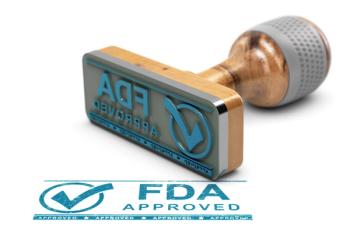
Acetaminophen: Helping Patients to Stay Below the Limit
Although acetaminophen is considered very safe, unintentional overdosing is a serious problem.
Although acetaminophen is considered very safe, unintentional overdosing is a serious problem.
Acetaminophen is a widely used analgesic and often considered the safest analgesic available. However, serious harm (eg, acetaminophen-induced liver failure) can occur if too much acetaminophen is intentionally or unintentionally ingested. Patients can be unintentionally exposed to more than the recommended daily limit of 4 g of acetaminophen in a number of ways. These include prescription container labeling that does not clearly indicate the presence or amount of acetaminophen, difficult-to-read font sizes on OTC products, and unintentional use of 2 or more acetaminophen-containing products simultaneously.
The Institute for Safe Medication Practices continues to receive reports of these situations; however, recent reports also point to problems associated with the directions for use provided to the patient by the prescriber and/or pharmacist. In some instances, errors are occurring with the number of tablets to be taken for a given dose. For example, the prescription may indicate to take 1 tablet but the pharmacy label directs the patient to take 1 or 2 tablets. In other situations, the frequency of administration has been entered incorrectly into the pharmacy computer system. Inadvertent entry of “q4hr” (every 4 hours) instead of “QID” (4 times a day) may place patients at risk of exceeding the recommended daily limit of 4 g of acetaminophen.
Unintentional overdoses will continue unless efforts are undertaken to raise awareness of this danger. Consider the following when prescription acetaminophencontaining products are being prescribed or dispensed and when patients purchase OTC acetaminophen products:
- Query patients about prescription and OTC medications to determine the amount of acetaminophen being used.
- Encourage patients to keep an up-todate list of all prescription, OTC, herbal, and nutritional products that they use and share this list with all health care practitioners when they seek care and obtain new prescriptions.
- Standardize how the drug name and dose of acetaminophen appear on pharmacy-generated labels. Ensure that labels list the amount in each dose whenever possible.
- Compare information on acetaminophen contained on auxiliary labels, in medication information leaflets, and on pharmacy labels for consistent representation of the drug name and dose. Identify any needed improvements.
- Require pharmacists to provide verbal and printed medication information to patients when dispensing new prescriptions for acetaminophen-containing medications. Establish a process (eg, mark the bag, place these prescriptions in a separate area) that alerts staff that counseling by the pharmacist is required.
- Provide education about the dangers of acetaminophen overuse and explain that many prescription and OTC products contain acetaminophen.
- Alert patients to the amount of acetaminophen in each dose, the maximum number of doses per day, and whether other acetaminophen products can be used simultaneously.
- Recommend that patients who use prescription medications that contain acetaminophen speak with a pharmacist when selecting OTC products.
- Utilize “shelf talkers” near acetaminophen- containing OTC products to raise awareness about these issues.
- Evaluate single and combination product prescriptions for total daily acetaminophen dose before they are given to patients. If the total dose could exceed 4 g a day, consider a change to a product containing less or no acetaminophen.
- Ensure that computer order entry systems provide maximum dose and drug duplication alerts for individual agents and for each component of a combination product.
- Notify physicians if their prescriptions may lead to a potentially toxic dose (including “as needed” orders that could be taken at each allowed interval) and provide alternatives, such as increasing the narcotic dose instead of simply increasing the number of combination tablets to be administered.
- Educate staff about issues that surround acetaminophen use and the potential for toxicity.
Dr. Gaunt is a medication safety analyst and the editor of ISMP Medication Safety Alert! Community/Ambulatory Care Edition.
Newsletter
Stay informed on drug updates, treatment guidelines, and pharmacy practice trends—subscribe to Pharmacy Times for weekly clinical insights.


















































































































































































































